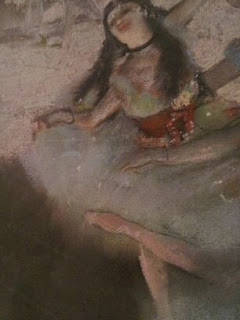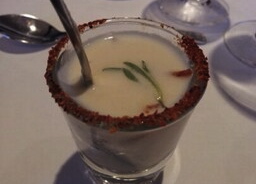The concert hall was pretty full for a Wednesday evening, with attendees of all ages pushing to get their tickets and reach their seats. Mussorgsky set the tone for the evening - not an evening to sit back and listen, but to sit forward and WATCH. The stresses and meter in this piece are so uneven and lurching and the swirls of sound that the piece creates got into every corner of the room. I don't know how anybody could sit comfortably directly behind the orchestra for this program. There were some excellent clarinet and flute parts (this program was another showcase for the woodwinds), and I think the harp must have been miked because it was a lot more prominent than I was used to... I felt at times that this program was just going for fortissimo oppression of the hall.
I'm pretty sure the entire audience was familiar with everything on the program that evening, so the maestoso first movement of the Tchaikovsky was heard with welcome and relief. With such a need for precision in the treble and sonority in the bass, I must say that the piano was tuned beautifully. Performed by 21-year-old Daniil Trifonov, who ambled on stage with gangly limbs and a skateboarder's haircut, I thought, "he's just a kid!" and then ....... he turned into the piece. Though this famous movement is often looked at as a choppy piece of extreme difficulty, and while this wasn't the cleanest of performances, I thought it was well done, energetic and passionate. The very clean high trills in the second movement over the waltz-like theme in the orchestra was exquisite and the lively Russian third movement was powerfully played. This was my favorite part of the evening.
While these days, a standing ovation in the concert hall seems almost required, this time, the audience was rewarded with a flashy encore of the piano version of the Infernal Dance from Stravinsky's Firebird Suite. I felt like the young pianist was saying, "Oh yeah? Let's step it up a notch, Chicago. Here's MY Stravinsky..... let's see what YOU can do!"
And the CSO brought it. A staple piece that they play well, I felt this time the concert hall was almost unable at times to hold the music in. Never letting the listener rest for more than a few moments when the solo instruments take over, the orchestra definitely has the capriciousness of this piece down. Their pesante was nauseatingly so and their take on frantic was almost unbearable. I hope nobody in the audience came in that evening already anxious. Bravo.
This concert is being performed again on Saturday evening.
Also, Happy Birthday, Dad!




























